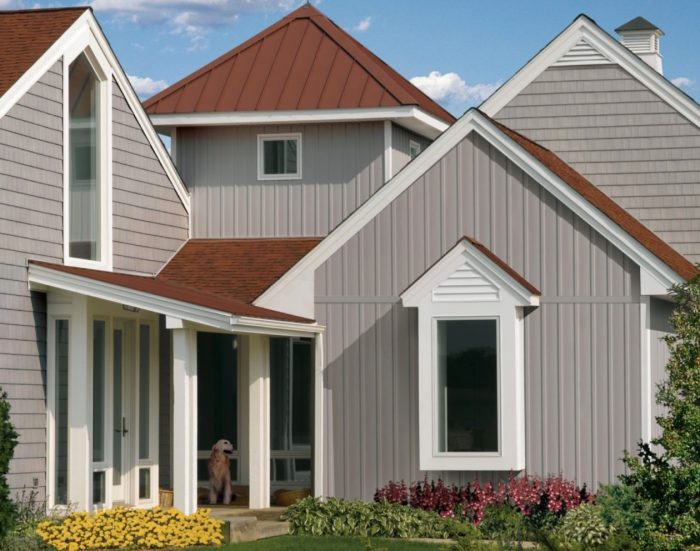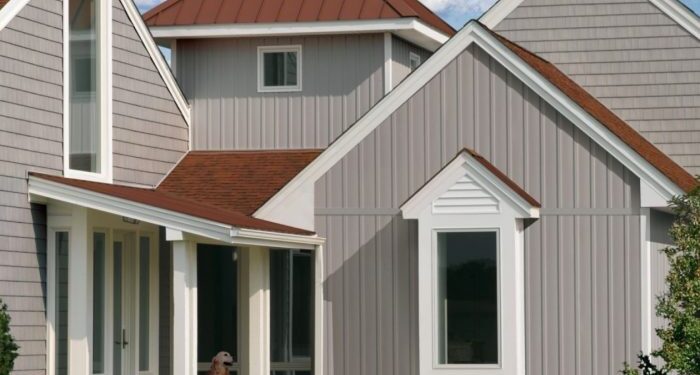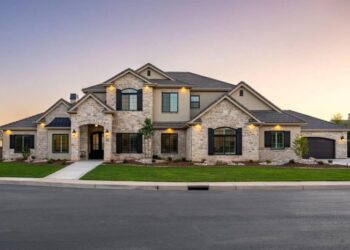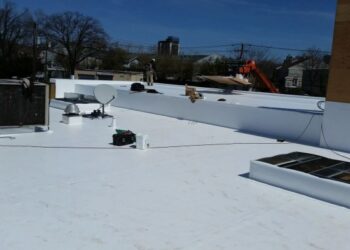Eco-friendly siding options have become a popular choice for environmentally conscious homeowners looking to reduce their carbon footprint. In this comprehensive guide, we delve into the world of sustainable siding materials, discussing their benefits, installation process, and long-term sustainability. Let's embark on a journey to discover the eco-friendly siding options that not only enhance the aesthetics of your home but also contribute to a greener planet.
Types of Eco-Friendly Siding Options

When it comes to eco-friendly siding options, there are several materials available that not only enhance the aesthetic appeal of a home but also contribute to environmental sustainability.
1. Reclaimed Wood
Reclaimed wood siding is sourced from old barns, factories, or other structures, giving it a unique and rustic look. By repurposing old wood, this siding option helps reduce the demand for new timber, thus conserving forests and reducing carbon emissions associated with logging.
2. Fiber Cement
Fiber cement siding is a durable and low-maintenance option made from a blend of cement, sand, and cellulose fibers. It is resistant to rot, pests, and fire, making it a long-lasting choice. Additionally, fiber cement is recyclable and contributes to energy efficiency in buildings.
3. Metal Siding
Metal siding, such as steel or aluminum, is a sustainable option due to its longevity and recyclability. It is resistant to pests, rot, and fire, and can be recycled at the end of its lifespan. Metal siding is also energy-efficient, helping to reduce heating and cooling costs in a home.
4. Cork Siding
Cork siding is a unique and environmentally-friendly option made from the bark of cork oak trees. It is a renewable resource, as the trees are not cut down during harvesting. Cork siding provides natural insulation, reducing energy consumption for heating and cooling.
Factors to Consider When Choosing Eco-Friendly Siding
When selecting eco-friendly siding for your home, several factors should be taken into consideration to ensure you make an informed decision that aligns with your sustainability goals.To evaluate the sustainability of a siding material, it is essential to look at its environmental impact throughout its lifecycle.
Consider factors such as the sourcing of raw materials, energy consumption during production, transportation emissions, and recyclability or biodegradability at the end of its life. Opt for materials with certifications like Forest Stewardship Council (FSC) or Cradle to Cradle (C2C) to ensure they meet rigorous sustainability standards.
Cost-Effectiveness of Eco-Friendly Siding Options
When comparing the cost-effectiveness of different eco-friendly siding options, it is essential to consider not only the upfront cost but also the long-term savings. While some sustainable materials may have a higher initial price, they can result in lower maintenance and energy costs over time, making them a more cost-effective choice in the long run.
Additionally, look for incentives or rebates available for eco-friendly upgrades to help offset the initial investment.
Durability and Maintenance Requirements
The durability and maintenance requirements of eco-friendly siding materials can vary significantly. Some materials, like fiber cement or metal siding, are known for their durability and resistance to rot, pests, and weather damage, requiring minimal maintenance over their lifespan. On the other hand, natural wood siding may require more frequent maintenance, such as staining or sealing, to prevent decay and prolong its lifespan.
Consider your willingness and ability to maintain the siding when choosing the most suitable option for your home.
Installation Process for Eco-Friendly Siding
When it comes to installing eco-friendly siding, there are specific steps that need to be followed to ensure a proper installation that maximizes energy efficiency.
Preparation and Planning
Before starting the installation process, it is essential to carefully plan and prepare the area where the eco-friendly siding will be installed. This includes checking for any existing damage to the walls, ensuring proper insulation, and making sure the surface is clean and dry.
Installation Steps
- Measure and Cut: Accurately measure the dimensions of the area where the siding will be installed and cut the siding panels accordingly.
- Attach the Siding: Securely attach the siding panels to the walls using the appropriate fasteners and techniques recommended by the manufacturer.
- Seal and Insulate: Seal any gaps or joints between the siding panels to prevent air leakage and ensure proper insulation.
- Finish and Paint: Once the siding is installed, apply any finishing touches such as painting or sealing to protect the siding and enhance its appearance.
Tips for Proper Installation
- Follow Manufacturer Guidelines: Always follow the installation instructions provided by the manufacturer to ensure a proper and effective installation.
- Use Quality Materials: Invest in high-quality siding materials and tools to ensure durability and energy efficiency.
- Proper Insulation: Make sure to properly insulate the walls before installing the siding to improve energy efficiency and reduce heat loss.
- Regular Maintenance: Keep the siding clean and well-maintained to prolong its lifespan and maximize its energy-saving benefits.
Common Challenges
- Improper Installation: Inadequate preparation or incorrect installation techniques can lead to air leakage, moisture problems, and reduced energy efficiency.
- Weather Conditions: Extreme weather conditions can impact the installation process and may require additional precautions or adjustments.
- Structural Issues: Existing structural issues in the walls can pose challenges during the installation of eco-friendly siding and may need to be addressed beforehand.
Maintenance and Long-Term Sustainability
Maintaining eco-friendly siding is essential to ensure its longevity and sustainability. By following specific maintenance tasks and strategies, you can prolong the lifespan of these sustainable materials and contribute to the overall sustainability of your building.
Maintenance Tasks for Eco-Friendly Siding
- Regular cleaning: Use a mild detergent and water to clean the siding periodically, removing any dirt, debris, or mold that may accumulate.
- Inspect for damage: Routinely check the siding for any cracks, chips, or signs of wear and tear. Promptly repair or replace damaged sections to prevent further issues.
- Paint touch-ups: If your eco-friendly siding is painted, touch up any chipped or faded areas to maintain its protective coating and aesthetic appeal.
Strategies for Prolonging the Lifespan of Eco-Friendly Siding
- Proper installation: Ensure that the siding is installed correctly by professionals to prevent future issues and maximize its durability.
- Regular inspections: Conduct routine inspections of the siding to catch any potential problems early and address them promptly.
- Sealing and weatherproofing: Apply sealants and weatherproofing treatments to protect the siding from moisture, UV rays, and other environmental factors that can cause damage.
Contribution to Overall Sustainability
Eco-friendly siding options contribute significantly to the overall sustainability of a building by reducing energy consumption, minimizing waste, and promoting a healthier environment. These materials are often made from recycled or renewable resources, require less energy to produce, and offer better insulation properties, leading to lower energy bills and decreased carbon footprint.
By choosing eco-friendly siding, you not only enhance the aesthetic appeal of your property but also support sustainable practices that benefit both the environment and future generations.
Closing Notes
As we wrap up our exploration of eco-friendly siding options, we have uncovered the myriad benefits of choosing sustainable materials for your home. From reduced environmental impact to long-term cost savings, eco-friendly siding is a wise investment for both your property and the planet.
Make the switch today and embrace a more sustainable way of living.
Quick FAQs
Are eco-friendly siding options more expensive than traditional materials?
While the upfront cost of eco-friendly siding options may be slightly higher, the long-term savings in energy bills and maintenance costs often outweigh the initial investment.
How do eco-friendly siding options contribute to energy efficiency?
Eco-friendly siding materials are designed to provide better insulation, reducing the need for excessive heating or cooling. This leads to lower energy consumption and increased energy efficiency.
Can eco-friendly siding options be painted or customized?
Yes, many eco-friendly siding materials can be painted or customized to suit your aesthetic preferences. Just make sure to use environmentally friendly paint and finishes.











